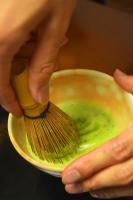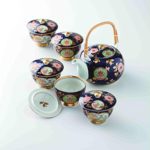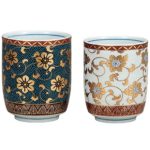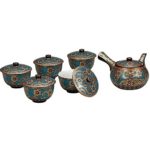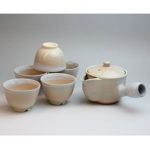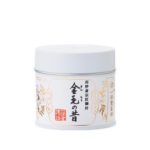
Table of Contents
The traditional, tasty and healthy drink, Japanese green tea
For Japanese, speaking of tea, they firstly call green tea to their mind. We can see the assorted Japanese green tea in the plastic bottles at a convenience store.
Green tea not only goes well with sorts of food (even the Western food) but also have effects on our body and mind.
Why is it green?
Compared with Western tea and oolong tea, Japanese tea has light green color. It is certainly not that they are made from the different kinds of the leaves.
The ingredients of Western tea, oolong tea, and Japanese tea are completely the same plant Camellia sinensis.
But the steaming process of making Japanese tea stops fermentation for the leaves and the oxidation of tannin. On that account, the chloroplasts remain in the leaves and it makes the color green.
Effects of Japanese green tea
Because without fermentation, green tea keeps the component, including catechin and vitamin C, of the flesh leaves.
Catechin (and polyphenol)
- Antioxidative effect (prevention for hardening of the arteries, high blood pressure, stroke, and lifestyle disease)
- Cancer prevention
- Regulation of the function of intestine
- Activation of brain cells (dementia prevention, improvement of memory and learning ability)
- Sterilization (prevention for bad breath, cold, influenza, and food poisoning)
Vitamin C
- Making the skin beautiful
- Stress relief effect
- Activation of brain cells (dementia prevention, improvement of memory and learning ability)
- Alcohol decomposition
Tannin
- Anti‐tooth decay
- Activation of brain cells (dementia prevention, improvement of memory and learning ability)
- Deodorant effect
But take care not to drink too much. It would cause caffeinism, diarrhea, dehydration, liver damage, or anemia.
Types of Japanese green tea
Actually, there are some types Japanese green tea by each processing method, Sencha, Hojicha, Gyokuro, and Maccha.
And, they have each suitable temperature to taste well.
Sencha
Sencha is the most popular in Japan and about 60% of the Japanese drinks it. Just after picked, the leaves are steamed and rolled.
When you drink Sencha, you had better use hot water with 90℃-100℃ and wait for 30 seconds for extraction.
You can also drink Sencha with the tea bags.
Hojicha
Strictly speaking, the color of Hojicha is not green but made by the way of the Japanese tea. The leaves of Hojicha are roasted instead of steamed.
You can enjoy the best taste of Hojicha with 95℃ and 30 seconds waiting.
Gyokuro
The leaves of Gyokuro are covered by straw or synthetic fibers when they begin to open. It makes the leaves richer and less astringency.
You should use lower temperature water than others, 60℃, and wait 2 minutes.
Matcha
Matcha, the powder without rolled, has been mainly used for the tea ceremony.
When you drink Matcha, you use boiled water at first. And you shift it other cups one time in winter (about 75℃-85℃) and two times in summer (about 70℃-80℃).
A standard to use the powder (per person):2 bamboo scoop (1 tea spoon, about 1.5g), 50cc-70cc water.
After put the powder into the cup, pour the cooled hot water and stir with a tea whisk until it bubbles.
In these days, the foods with Mactha are also popular in Japan.
Read more about Matcha?

